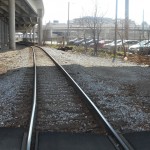MMPT, 2011-2014
The 2011 revival of the MMPT emerged from an apparently coordinated multi-institutional effort. The proposed terminal found itself as a key piece in major planning documents approved at the state, regional, and city levels.
The map below shows property still belonging to Norfolk Southern (in green, when enabled) and the planned site of the MMPT (in orange, when enabled).
GDOT’s “Georgia State Rail Plan,” a 2011 document with a 2014 update, featured the MMPT. The agency noted that Atlanta was once a rail hub and that reviving that node “could bring substantial transportation and economic benefits to the Atlanta region and state of Georgia.” A central facility must lie at the heart of the project, the authors argued, and they pointed out “this location could support transit-oriented land development.” The report also noted that the MMPT was included in the White House’s “We Can’t Wait” initiative, a program meant to fast-track critical infrastructure projects.[1] In October of that year, GDOT awarded a $12.2 million contract to a team of developers (two based in Atlanta) for developing the MMPT.[2]

Also in 2011, the Atlanta Regional Commission (ARC) adopted a major planning document called “PLAN 2040,” part of which is a Regional Transportation Plan (RTP). The RTP was modified in 2014, in response to reauthorization of federal transportation funding through the Moving Ahead for Progress in the 21st Century (MAP-21) program.[3] The RTP notes the GDOT-contracted developers’ work and adds that a separate “Environmental team” was carrying out an impact statement, slated for completion in 2014.[4] The ARC also incorporated the MMPT into its long-range transit plan called “Concept 3.”[5]
Finally, the City of Atlanta’s Department of Planning and Community Development wrote the Connect Atlanta Comprehensive Transportation Plan (CTP). The “Green Line,” mentioned on the introductory MMPT page, plays a key role in the CTP. Actually a concept of Central Atlanta Progress, the Green Line would comprise a redevelopment project of the area connecting the Georgia State and Capitol areas to the southeast with the Philips Arena and Centennial Olympic Park areas to the northwest. The plan presumes the construction of the MMPT.
All of this apparent momentum clashed with realities on the ground, whether political or financial. GDOT apparently got ahead of itself in the spring of 2014, releasing a dramatic video treatment of the planned MMPT. “Rail lines helped define Atlanta,” one slide states, continuing, “they still exist.”[6] But hopes crashed back to earth when the video was removed and skeptical news articles appeared in the Journal-Constitution.[7]
Shots from the GDOT publicity below:
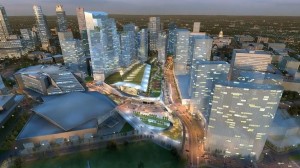 |
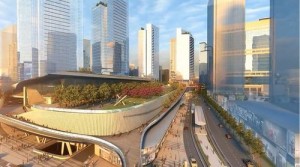 |
Credits, see footnote 6.
And a before and after, looking west from the capitol, published in the Atlanta Journal-Constitution.
 |
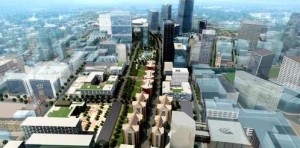 |
http://m.ajc.com/gallery/business/1212gulch/gzZ2/
—
[1] Georgia Department of Transportation, “Draft Georgia State Rail Plan, 2011. Updated 2014,” 2011.
[2] http://saportareport.com/lead-partner-in-gulch-project-to-sell-70-percent-of-nyc-deal-to-state-owned-chinese-firm/, accessed April 27, 2015.
[3] http://www.atlantaregional.com/transportation/regional-transportation-plan, accessed 8 April 2015.
[4] Atlanta Regional Commission, PLAN 2040. Volume I: PLAN 2040 Regional Transportation Plan (RTP) (Atlanta: 2011, updated 2014), 111.
[5] http://www.atlantaregional.com/transportation/transit/transit-planning, accessed 8 April 2015.
[6] “Multi-Modal Terminal Vision Will Blow Your Mind,” http://atlanta.curbed.com/archives/2014/03/19/multimodal-terminal-vision-will-blow-your-mind.php, accessed April 10, 2015.
[7] AJC, “Gulch terminal: one very cool video, not much else,” Wednesday, April 2, 2014. http://www.myajc.com/news/news/traffic/gulch-terminal-one-very-cool-video-not-much-else/nfQpj/, accessed April 10, 2015.
1991-1995 |
1999-2003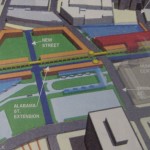 |
2011-2014 |
Why no MMPT? |



